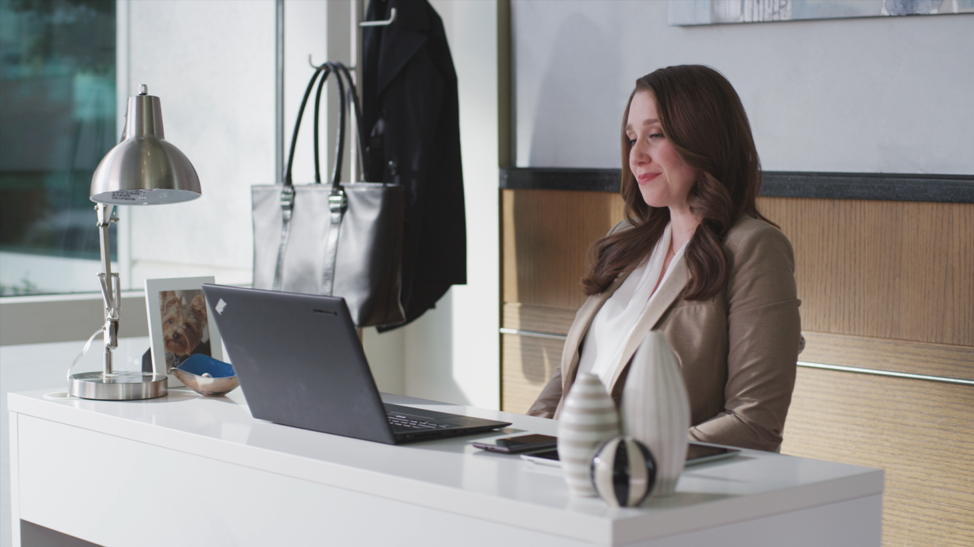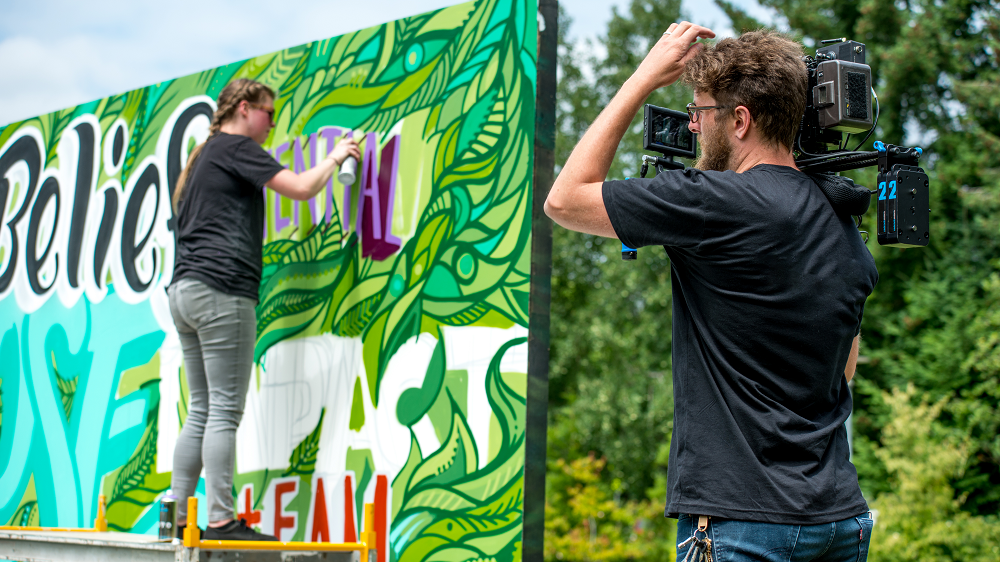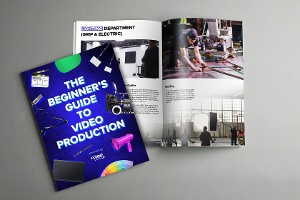Novels use the written word; theater relies on dialogue to communicate with everyone; but video can show us anything, from any perspective, with the right choice of images and sounds.
Everyone and everything has a story.
A tech company launching new software, a beverage company highlighting their work in the community, even the print shop down the street.
Finding a story to tell is the easy part of video storytelling. The hard part is finding the b-roll to support your story. This article will break down what b-roll is, why it’s important, and how best to capture it.
What is B-Roll?
B-roll is supplemental video footage used to drive the story in a certain direction, visually demonstrate a point or concept, cover cuts between soundbites, set a mood, and make a video more engaging and interesting to the viewer.
Sometimes, b-roll can be synonymous with stock video as it's often seen as "filler." However, b-roll/stock video can really help illustrate a story and is often overlooked when creating marketing or corporate video content.
How to Capture B-Roll
When shooting b-roll, it’s important to keep in mind the same principles used when shooting the other parts of your video: good lighting, composition, and dynamic camera moves.
Be creative and give yourself plenty of time to think and plan out your shots. You should never just “show up” and capture whatever is happening.
So, what does it take to visually tell a story? How do you visualize a non-visual story? Everyone has their own approach to capturing and visualizing a story, but let’s start with the basics.
Tip #1 for Capturing B-Roll: Video Script
The first thing you need is a script, even if your story is unscripted. A rough script, or simply an outline of the story you want to tell, will help you visualize the different scenarios that will play out.
Here are a few basic tips to get your script started.
- Find your story
- Define your target audience
- Speak to your audience
- Keep it simple
FREE DOWNLOAD: Video Script Worksheet
Tip #2 for Capturing B-Roll: Outline the Visuals
The next thing you’ll want to do is think about the visual aspects of your story.
Some stories are easy to visualize, for example, a dog and its owner being reunited thanks to a collar with GPS tracking technology. You’d need video of the dog, its owner, how they got separated, the collar, the technology at work, and their reunion (and lots of other elements in between).
Now, how do you outline the visuals of a story that’s less visual and more conceptual? Take procurement, for example? How do you visualize procurement? (I’m not even sure I know what it is, but visualizing it? Feels impossible.)
Identify the Subject of the Story
First, think about the subject of the story. In the case of procurement, let’s say the subject is procurement software being used within an organization.
That’s still not easy to visualize, right?
To start the process, think about who is using the software. Personalizing your story and making people using the software your subject will go a long way in helping visualize your story.
Capture the Subject in Their Natural Environment
Now that you’ve identified someone within the organization who uses the software as the subject, think about what that person does at their job all day. They likely spend most of their day at a computer and collaborating with co-workers.
Here are some tips on how to capture what could easily be mundane b-roll into clips that will really stand out. Spoiler alert, the gear you use plays a big role in how your content is captured.
- Use a gimbal for steady shots of the subject walking through the office and interacting with their co-workers.
- Get tight shots of people shaking hands.
- Use a slider to get dynamic shots of people working at their desk
- Get wide, medium, and tight shots of every scenario from all angles. Maybe a close-up of a pencil being set down, or a slider shot across the keyboard while the subject is typing, or an over-the-shoulder/top-down shot of the subject looking over projects with a coworker—you get the idea.

Dos and Don’ts of Capturing B-Roll
There are individual preferences, styles and techniques to capturing b-roll, but there’s also some basic dos and don’ts.
Do:
- Think outside of the box: visually tell the story from every angle and every scenario.
- Capture unique perspectives: an example includes a top down perspective like a drone or flat lay.
- Add movement.
- Experiment with different gear.
Don’t:
- Be static: don’t just place the camera on a tripod and walk away.
- Move too fast: give each shot enough attention.
- Plan your shots last minute: think ahead, outline a script, and capture the essential shots. You can, of course, go off script and capture some last-minute shots if the environment presents.

The Importance of B-Roll in Video Marketing
As a viewer, you might not even think about b-roll (or know exactly what it is), but it’s an essential part of storytelling. Not many people will want to watch a static video that only features a person talking directly to camera. Delighting your target audience with dynamic b-roll footage increases the likelihood of not only capturing their attention but keeping it throughout the video and ensuring your message is seen and heard.
Creating a custom stock library of b-roll footage for your business is a strategic way to build up content for whenever the occasion arises. VMG Studios is equipped to help bring your video marketing strategy to life with dynamic, custom b-roll that will set you apart from your competition.
To learn more about video production, click the image below to download the free eBook below, "The Beginner's Guide to Video Production






